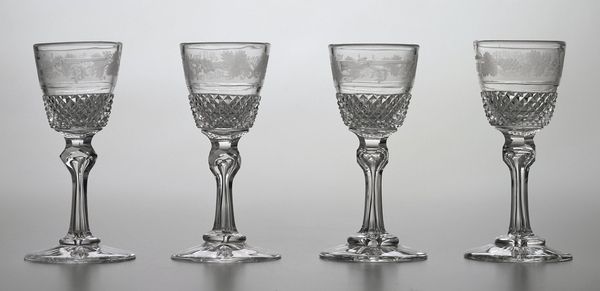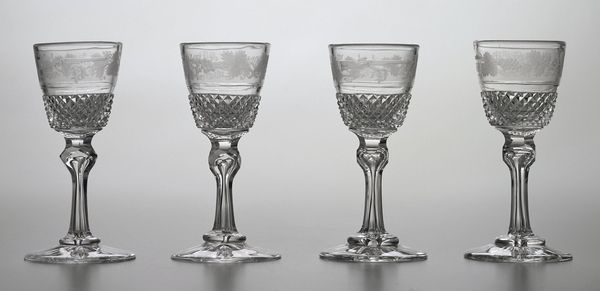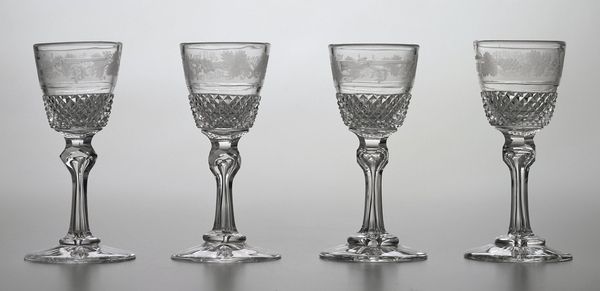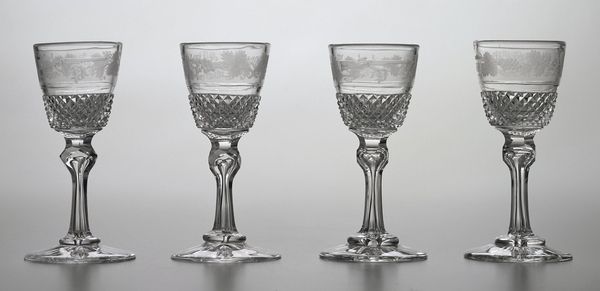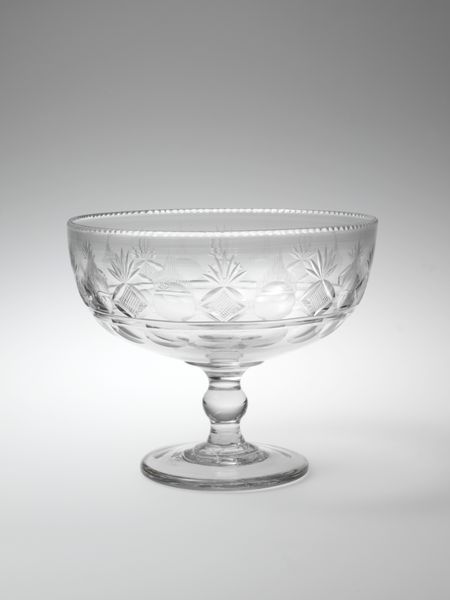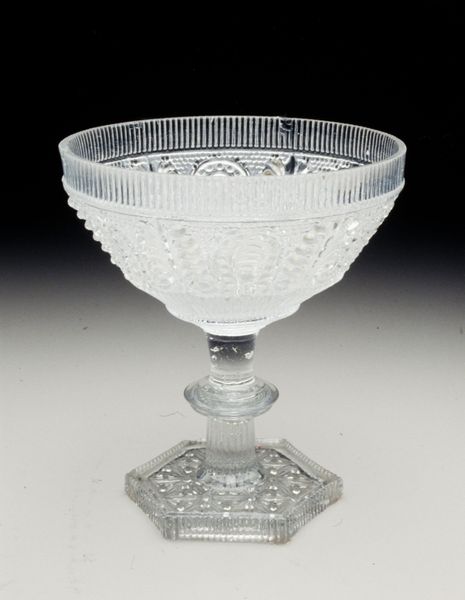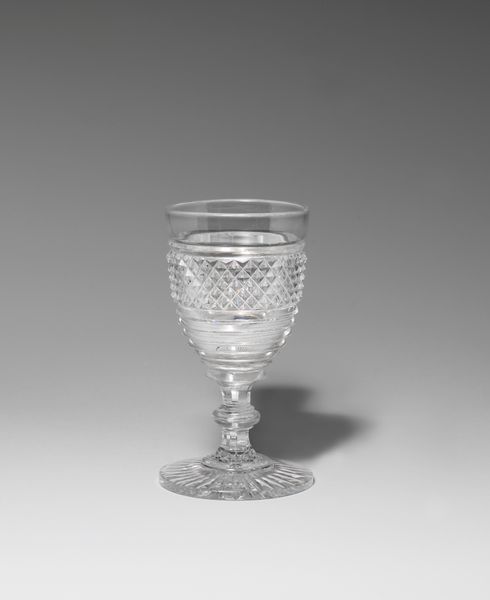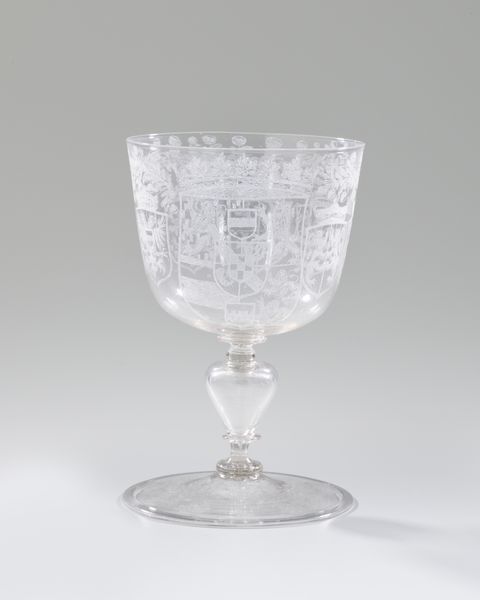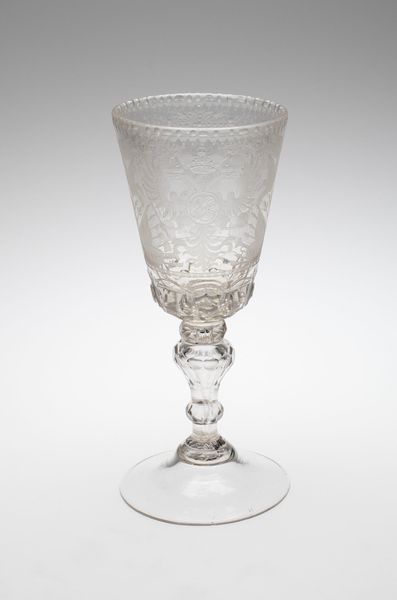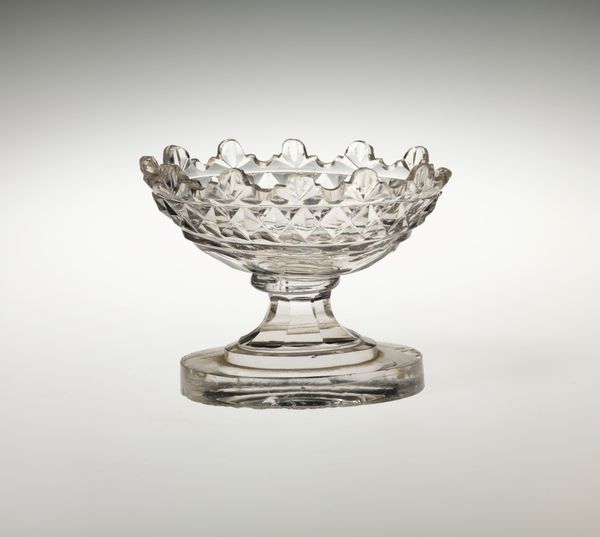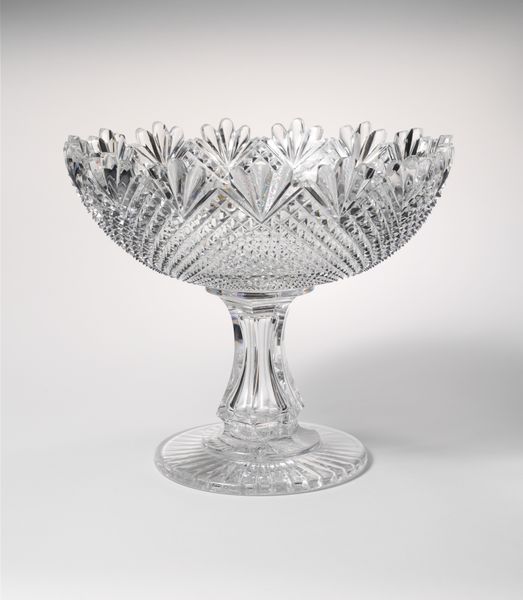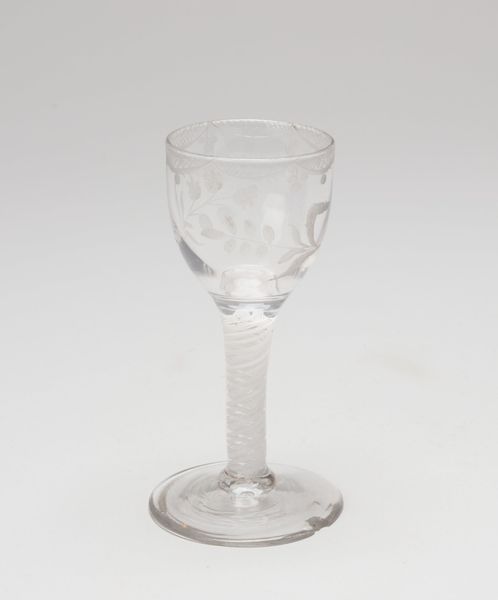
glass
#
glass
#
ceramic
#
decorative-art
Dimensions: Ea. 26 × 26 cm (10 1/4 × 10 1/4 in.)
Copyright: Public Domain
Editor: Here we have a 'Pair of Compotes', made of glass sometime between 1851 and 1857. They strike me as incredibly delicate and decorative. What can you tell me about them? Curator: Considering these compotes through a materialist lens, I'm drawn to the production and the hands involved in their creation. The intricate cutting patterns, for instance. Each facet had to be precisely formed through labor. It raises questions about who made them and the social status associated with glasswork. How do you think the average person might have reacted to seeing these? Editor: That's a good point. Glassware like this must have been quite expensive at the time. Was there something special about how they were made, or the material used? Curator: Possibly, depending on the type of glass and the techniques employed. Were they hand-blown and then cut, or pressed? The material's origin itself-- the sand, the additives--and how those resources were acquired would contribute to the story. This period saw advancements in glassmaking. These advances definitely impacted how these objects could be produced and consumed. And who ultimately could enjoy the privilege of using such pieces. Editor: Thinking about the labor and resources makes me appreciate them on a deeper level than just their aesthetic appeal. Curator: Exactly. Considering the social and economic contexts transforms our understanding of the artistry. The “decorative arts” can be powerful reflections of a society’s values, access to resources and methods of manufacture. It challenges the division between art and craft. Editor: That's fascinating! I never really considered glass-making from a materialist perspective. I will definitely look at decorative art in new ways from now on! Curator: It’s a useful way to unpack histories embedded within objects that are easily overlooked.
Comments
No comments
Be the first to comment and join the conversation on the ultimate creative platform.
